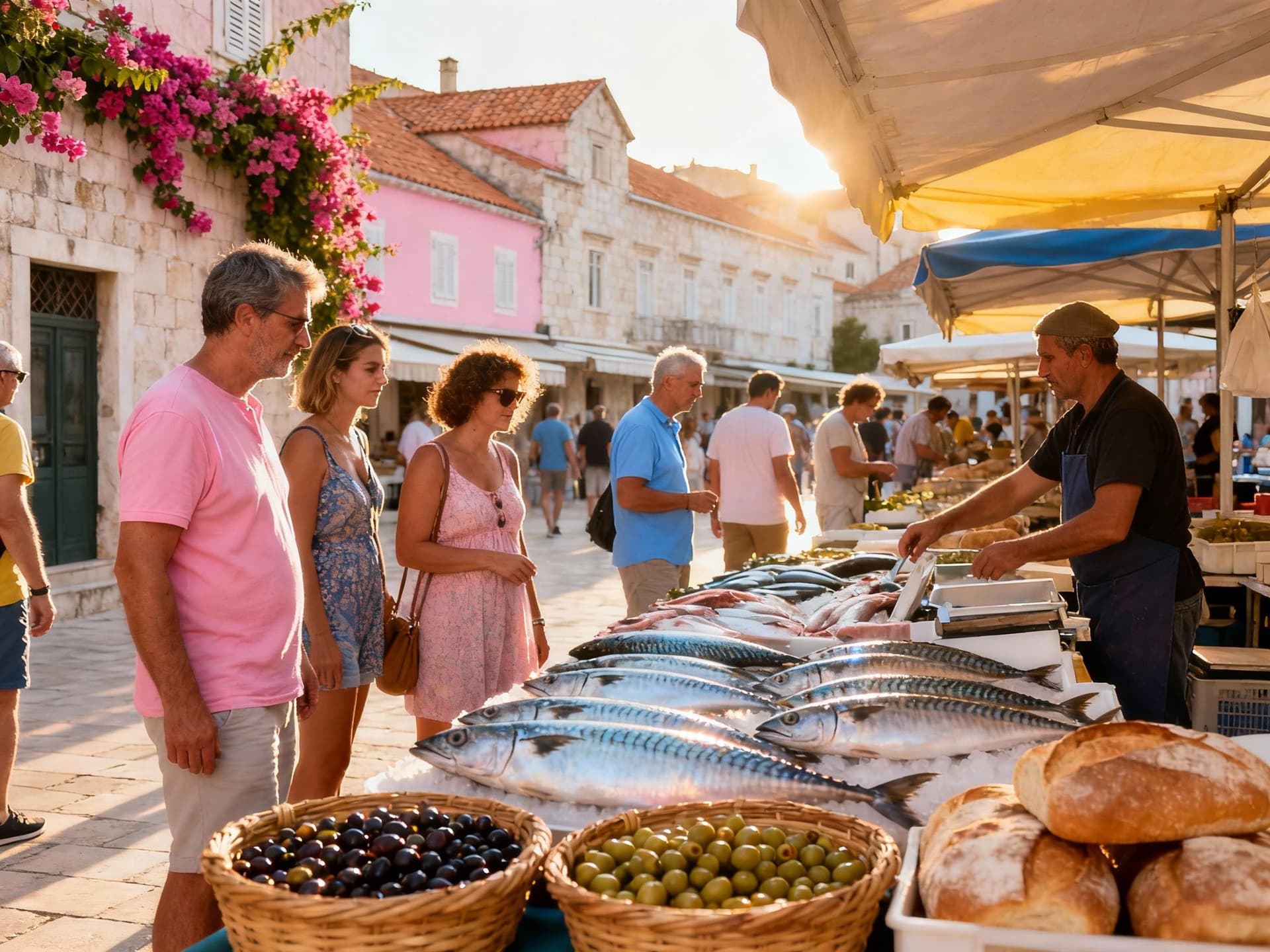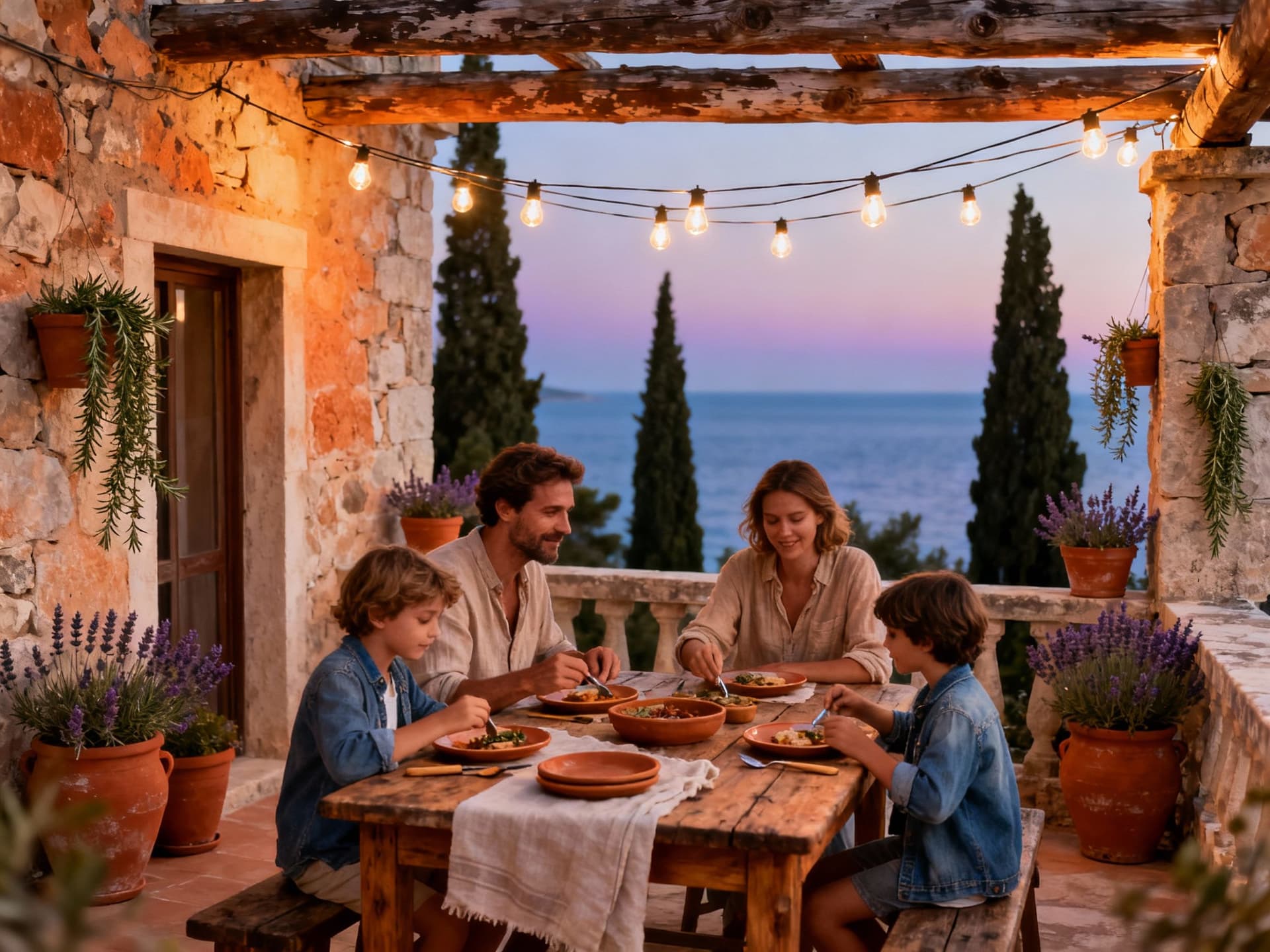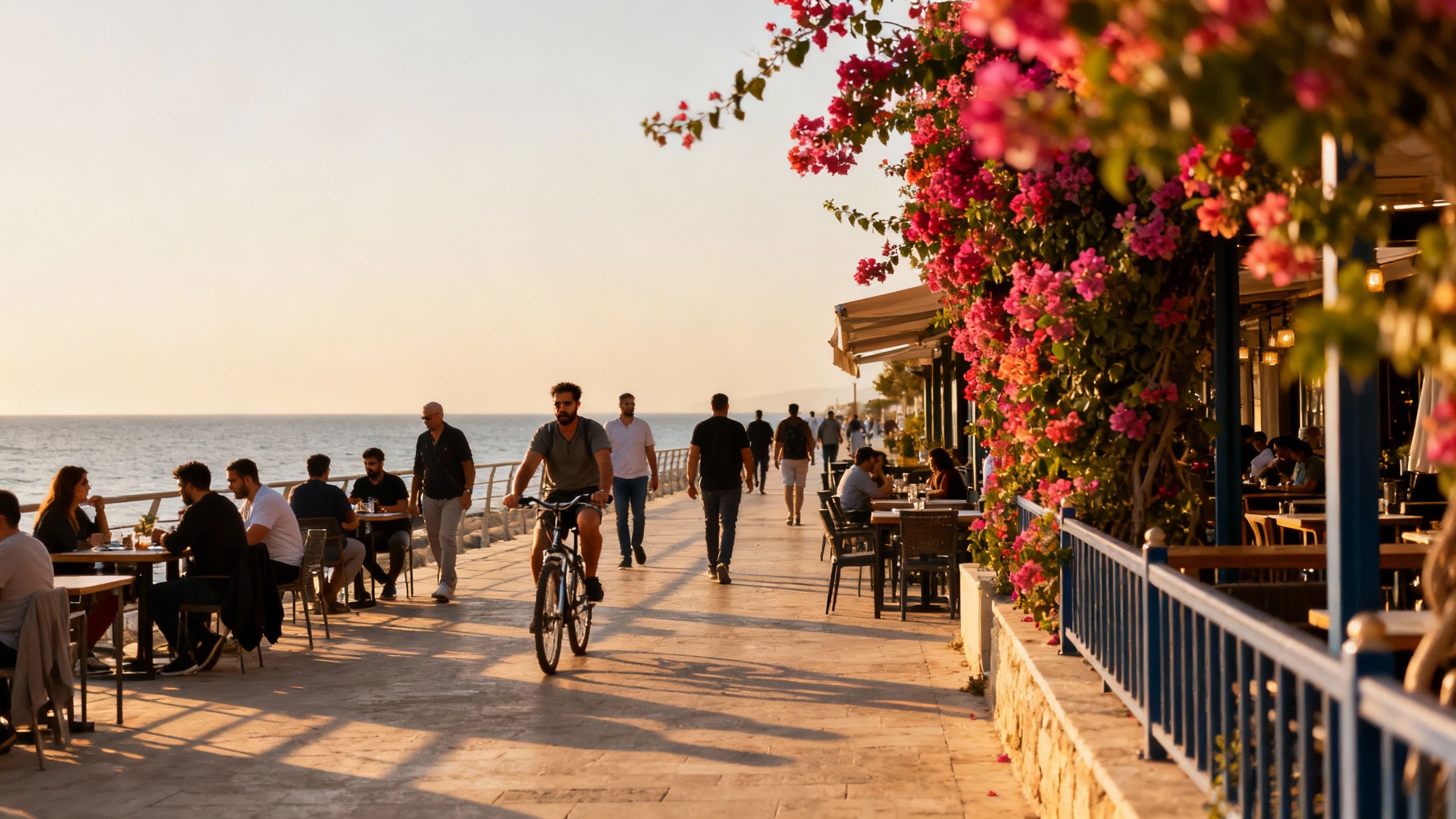When Croatia's Summer Sparkles Hide Due‑Diligence Risks
Croatia’s summer sparkle can mask legal and seasonal pitfalls; visit off‑season, check reciprocity rules for land, and plan for tax and rental regulation changes before you buy.
Picture this: an early morning in Split, the stone terraces still cool, the coffee at Kaštel coffee bar steaming while fishermen mend nets in the bright harbour. You can smell pine resin and warm bread; bougainvillea frames a pastel façade. For many international buyers, Croatia begins with scenes like this — luminous summers, quiet coves, and easy, unhurried days. But the brightest months also mask regulatory and market quirks that catch newcomers off guard, especially around permits, seasonal pricing, and changing tax rules. Recent reporting shows Croatia is shifting tax policy and clamping down on short-term rentals — both signals buyers should weigh alongside the romance.
Living the Croatian Life: More than Sunlit Views

Life here is tactile and seasonal. Summers fill promenades from Dubrovnik’s old city stairs to the Riva in Split; autumn brings mushroom foraging in Istrian oaks, and winter softens the coast to a quieter rhythm of markets and family dinners. Neighborhoods feel distinct: Zagreb’s leafy Pantovčak hums with local cafés and weekend markets; Split’s Varoš and Bačvice balance fishermen’s traditions with modern terraces; Hvar’s Stari Grad offers lavender-dusted lanes and an artisan food scene. These daily textures shape what to buy — a compact stone apartment near cafés feels different from a sun-bathed Dalmatian veranda meant for long summer days.
Neighborhood Spotlight: Split’s Varoš and Bačvice
Imagine waking to the smell of grilled sardines, wandering cobbled alleys to a bakery on Iza Ploča, then pausing at a stone bench to watch local life unfurl. Varoš is intimate — narrow lanes, terraces with sea glimpses, elderly neighbours who know your name. Bačvice is livelier, with its sandy bay, volleyball nets, and late-night konobas. Properties here are often historic stone houses with cool interiors, thick walls that naturally regulate temperature, and small terraces that become summer rooms. For buyers, that means paying attention to load-bearing walls, insulation upgrades, and how modern interventions (glass terraces, air conditioning) sit within protected old-town fabrics.
Food, Markets and Seasonal Rhythms
A Saturday in Rovinj or Zadar means fishmongers calling the catch, bakers arranging burek, and elders comparing olive oil yields. Food anchors social life and property use: if you love farm-to-table living, look for homes with sunny courtyards for herbs and fig trees, or easy access to municipal markets in places like Pula and Split. Seasonal festivals — olive harvests in Istria, truffle weeks inland, and island regattas — transform neighborhoods and can reveal hidden constraints (parking, noise regulations, short‑term rental demand) that affect both living and letting a property.
- Lifestyle highlights to test when house‑hunting in Croatia: 1) Morning espresso at a neighbourhood konoba (Split: Iza Ploča); 2) Weekly farmers’ market (Zagreb’s Dolac Market); 3) Evening stargazing from a Dalmatian terrace (Hvar, Vis); 4) Local olive‑press visit during harvest (Istria); 5) A weekday walk along Dubrovnik’s Lapad promenade; 6) Sampling family-run konobas off the tourist trail (Šibenik islands).
Making the Move: Practical Considerations that Preserve the Lifestyle

Romance and reality must meet early. Croatia’s legal framework is relatively open for EU citizens but layered with important exceptions — agricultural land, some coastal concessions, and past protections that require looking closely at reciprocity and approvals. Even within towns, local planning rules, historical protections, and environmental restrictions (coastal setback lines, protected landscapes) determine what you can renovate or expand. Consider how your dream lifestyle — a garden kitchen, passive cooling, solar panels — fits local rules and neighbours' expectations before you bid.
Property Types & What They Mean for Life
Stone townhouses offer intimacy, thermal mass, and proximity to cafés — perfect for slow living but often come with conservation rules. Newer villas on the Istrian hills or Pelješac peninsulas offer space for gardens and PV systems, but check septic rules and water access in drier summers. If sustainable living matters, prioritise properties with south-facing terraces, room for rainwater harvesting, and existing PV readiness; these features reduce running costs and deepen the connection between house and landscape.
Working with Local Experts Who Know Both Culture and Codes
- 1. Hire a notary and local lawyer early — they check title, encumbrances, and municipal plans. 2. Engage a local architect familiar with heritage rules for any retrofit. 3. Ask an agent for seasonal performance data if you plan to rent — new regulations are tightening short‑term lets. 4. Visit off‑season to test the real rhythm of the neighbourhood (noise, services, transport). 5. Have a surveyor verify structural and moisture risks — stone houses can hide damp or salt damage.
Insider Knowledge: What Expats Wish They’d Known Sooner
One common surprise: Croatian ‘summer prices’ inflate expectations. Sellers in peak season often list at tourist-driven highs; visiting in November or March reveals true bargaining room. Another is agricultural land — acquiring it can be restricted and may require company structures or reciprocity checks. And while EU residency rules simplify ownership for EU citizens, non-EU buyers may need ministerial approvals for certain purchases. These legal nuances influence not only price but how you will actually use and steward the property.
Cultural Integration and Everyday Life
Croatians value community over show. Greeting neighbours, attending local feast days (svetkovina), and learning a few phrases opens doors. Practical life-building — registering utilities, learning waste sorting norms, and finding a local builder — often depends on small, human relationships. For sustainability-minded buyers, partnering with neighbours on community gardens or shared rainwater systems can fast-track both practical acceptance and ecological wins.
Long-Term Lifestyle: From Holiday House to Year-Round Home
- Factors to consider as seasonal use becomes permanent: 1) Heating and insulation upgrades for winter comfort; 2) Reliable fresh-water access and drought plans; 3) Healthcare and local services proximity; 4) Broadband and co-working options for remote work; 5) Local community calendar — festivals, market days, and quiet months.
Conclusion — Live the Life, Do the Homework: Croatia offers a life woven with sea, stone and season. To translate that romance into a resilient purchase, marry sensory scouting with practical due diligence: visit off-season, confirm land and coastal rules, test local services, and work with Croatian lawyers, notaries and architects who share your sustainability values. Recent policy moves on property taxation and short‑term rentals underscore the need to plan for long‑term stewardship, not just summer returns. When you buy this way, the house becomes part of an ecosystem — and your life follows naturally.
Danish relocation specialist who moved from Copenhagen to the Algarve; supports families with seamless transitions, local partnerships, and mindful purchases.


